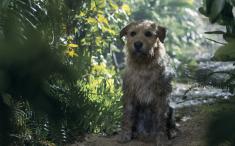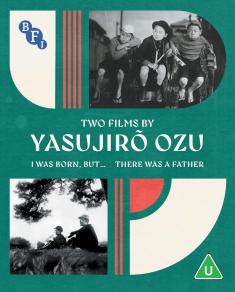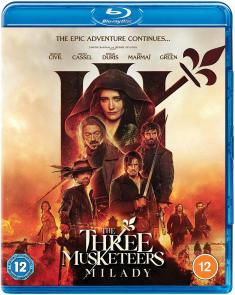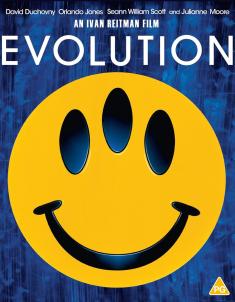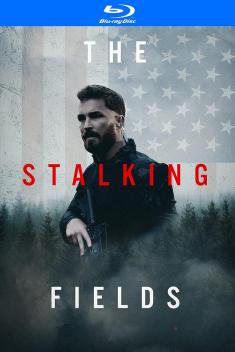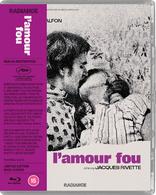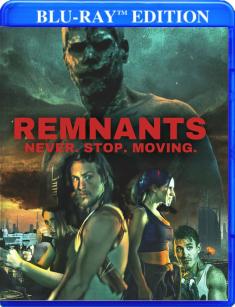Dawson City: Frozen Time
Overview -
A thrilling adventure through American history, Dawson City: Frozen Time pieces together the bizarre true story of a collection of some 500 silent films. Dating from the 1910s and 20s, they were lost for over 50 years until being discovered buried in a subarctic swimming pool deep in the Yukon Territory in 1978. Director Bill Morrison (Decasia) uses this extraordinary footage as a conduit to explore the complicated past of Dawson City, a Canadian gold rush town and First Nation hunting camp that was transformed and displaced. Dawson City: Frozen Time is a triumphant work of art that chronicles the life cycle of a singular film collection through its exile, burial, rediscovery, and salvation, discovering another world in the process.
Storyline: Our Reviewer's Take

"Film was born of an explosive."
I can be a pretty tough cookie when it comes to documentaries or documentary series. While I'll always watch everything Ken Burns puts in front of my eyeballs, everything else has to live up to pretty strict criteria if it's going to hold my attention. Do I already know about the topic? If I do does this film offer up anything new or relevant? Is it a biased puff piece or is it going to delve deep and unflinchingly into a topic? While I'll usually give just about any doc a shot, I rarely get through to the end before I feel like its said all it has to say and is just wasting away my time. Even if I do make it all the way through, I'm rarely compelled to watch the documentary again.
Then you have a film like Bill Morrison's Dawson City: Frozen Time.
Not only does it retell the history of the Arctic Yukon city, it also offers up a striking and informative history of film, filmmaking, and distribution using its unique archive of still photos and forgotten reels of silent film.
For those unaware about Dawson City and it's connection to film and film history, Dawson City: Frozen Time does an impeccable job at getting you caught up quickly, with tons of information, and without making you ever feel overloaded. In 1978 while digging up an old lot, an excavator discovered a virtual treasure trove of film cans, reels, and loose nitrate film that had been buried in an old swimming pool. The cold frozen ground preserved the films for over 50 years after being buried allowing for the recovery of hundreds of feature-length films, short films, and event footage that had long been believed lost. You see, Dawson City's famed Orpheum theater was virtually the last link in the film distribution chain at that time. Whatever film reel was sent to Dawson, stayed in Dawson. Simply because they didn't know what to do with the films, they were buried.
Where I am at a loss about how to discuss this film stems from the simple fact that all I want people to do is find this film and watch it. It begins as any standard typical documentary does by giving you the simple set up about the 1978 discovery. A little reenactment, some archive footage, and then it goes back in time and delves deep into history. Bill Morrison's approach steers the ship perfectly with the interwoven story about the birth of film and the Lumiere Brothers and the early history of Dawson City when it was important tribal lands before the gold dust had even been found by white traders.
More intestinally, this early period of the film - in fact about the first 45-minutes or so is virtually silent. As we learn bits and pieces of the town, how gold was discovered, and how people traversed treacherous trails to reach the city - all juxtaposed with film footage found from the Dawson City dig. Where one shot may be a static image with a text scrawl about how men had to carry hundreds of pounds of gear and equipment up the steep face of a snow-covered mounting before being allowed into the city, the next shot is footage from Charles Chaplin's The Gold Rush depicting the very same scene. It's amazing in the historical context of seeing men crawling through a frozen wasteland just for the possibility of finding gold and then seeing it recreated by Chaplin gives you a whole new appreciation for the director's meticulous eye for detail.
If I have a bit of a quibble about this early approach to presenting the material within Dawson City: Frozen Time is that it would have benefitted from the presence of a narrator. Someone like frequent Ken Burns collaborator Peter Coyote or someone of that vocal timbre could have possibly punched things up. After a while, I felt like reading the text against the visuals with a beautiful score by Alex Somers was making the piece feel a bit too languid. While the information is incredible - you'll never guess where and how some famous family fortunes started - I could have used a little bit of break in the flow just to keep my brain snapped at attention. That said, that is a minor quibble. Once the film gets into the discovery and preservation of nearly 500 lost films, Dawson City: Frozen Time takes on a more traditional documentary style.
Throughout it all, Dawson City: Frozen Time is possibly one of the most fascinating films I've seen all year. In such a short spread of time, I came away feeling like I learned an incredible amount of information. More importantly, I felt the urge to see it again lest I may have missed something - and sure enough - I did. This is one of the rare documentaries that I feel like I actually need to give multiple viewings. After rolling through it twice, I felt like my area of focus was different. The first time I was far more interested in the discovery and identifying the lost films than I was the history. The second time, that mountain of information at the front end resonated more. I'm sure the third time through I'll glean even more from the piece. As I personally know dozens of people who would love to see this film, I can't encourage it enough that people seek this documentary out and give it an honest and healthy viewing. If at the very least you don't love it, I can virtually guarantee that you'll learn something amazing and new making it well worth your time.
Vital Disc Stats: The Blu-ray
Dawson City: Frozen Time arrives on Blu-ray courtesy of Kino Lorber. Pressed onto a Region A BD-50 disc, the disc is housed in a standard sturdy Blu-ray case. Also included is a booklet containing stills from the film as well as two terrific essays by Lawrence Weschler and Alberto Zambenedetti. The disc loads directly to a static image main menu with traditional navigation options.
Video Review

Presented in 1.33:1 1080p, the transfer for Dawson City: Frozen Time is one that is subject to the footage used in the moment. When you're dealing with film clips and newsreels that had been buried in the arctic tundra for decades, you understandably have some checked expectations. However, I'm floored by the clarity of some of these scenes and clips. Even the ones that exhibit serious damage and decay showcase an amazing amount of fine detail and definition. Additionally, the use of still photos, videotape footage, and more recent digital video are also employed to complete the story. As such, it's almost fitting that virtually some form of every image capturing technology ever made was utilized for this film. It offers up a unique perspective on advances in technology while also providing some incredible insight into past events. All in all, this is a terrific presentation indicative of multiple source elements in varying conditions. Each piece of the film is in a different condition or stock than the one before or after. The film elements, despite the damage, look the best. The late 70s VTR footage of the premiere of the Dawson Film Find is a little rougher but still relatively clear.
Audio Review

Dawson City: Frozen Time arrives with a pair of great audio tracks. Whether you chose the DTS-HD MA 5.1 mix or the DTS-HD MA 2.0 mix, you're guaranteed to have a pitch-perfect audio experience. The film is sonically uncomplicated, that is to say, that it doesn't make demand much of your system beyond the bare necessities. Dialogue is sparse save for the front end and the latter half where there is more detail about the dig, recovering the film reels, and the preservation. That's where the 2.0 stereo mix amply gets the job done. However, I give the 5.1 mix the edge during the silent footage. Morrison employed the use of subtle sound effects evocative of particular scenes to punch up their dramatic punches. Like I said, they're subtle, you don't immediately notice them. In stereo, they feel more incidental while the 5.1 mix wraps things around to the sides and rears a bit gives these flourishes of audio a more distinct presence. Both mixes work perfectly and if you don't have a good surround system, that 2.0 mix does a terrific job. It's a virtual win/win for everyone.
Special Features

As if the film wasn't enough of a treasure, Kino tossed in a few worthwhile extra features to round out the package. While the extra material surrounding the making of the film is certainly exciting stuff, it's the trove of newsreels and short films from the Dawson Find that makes this an exciting set of bonus features. The essays included in the booklet are also well worth the read.
Dawson City: Postscript (HD 9:54) This is some extra interview footage with Michael Gates and his wife that works as a fitting epilogue of sorts to the film. You also get to see some incredible footage from the Canadian National Archive team and their efforts to clean and repair the films.
Bill Morrison Interview (HD 8:49) Morrison discusses using newsreel footage to highlight the changes in the town over time and the eventual decline in population.
Sections from the Dawson Film Find - This is a collection of eight newsreels and short films that were all found buried in Dawson City. Some are in pretty rough shape with very visible damage, but at least they survive in some form and it's very cool to see.
British Canadian Pathé News 81A, 1919 (HD 9:35)
International News Vol.1 Issue 52, 1919 (HD 11:29)
The Montreal Herald Screen Magazine, 1919 (HD 9:34)
Pathé's Weekly #17, 1914 (HD 9:13)
The Butler and the Maid - Thomas A. Edison Inc. 1912 (HD 3:07)
Brutality - D.W. Griffith, Biograph Company 1912 (HD 8:05)
The Exquisite Thief - Tod Browning, 1919 (HD 8:33) This one is particularly cool - Browning's silent chase sequence is moody and damn creepy. Definitely, check this one out.
The Girl of the Northern Woods - Tanhouser, 1910 (HD 6:35)
Final Thoughts

While I love a good documentary or PBS special, I rarely ever feel the need to rewatch them. Sort of like reading a social studies book as a kid, once you've gotten the story the first time, second readings rarely propagate new information. However, Dawson City: Frozen Time is a truly unique experience. You're watching the birth of a medium as well as a town and how intrinsically linked they all were. The Dawson Film Find restored a piece of film history long thought lost and this film perfectly captures the journey. If you're at all a history nut or a film fan, there's no other way than to say this is essential viewing. Kino Lorber brings the film to Blu-ray in terrific order with a fantastic transfer, great audio, and a host of bonus features that are actually worth picking through. This is an easy one to call highly recommended.




